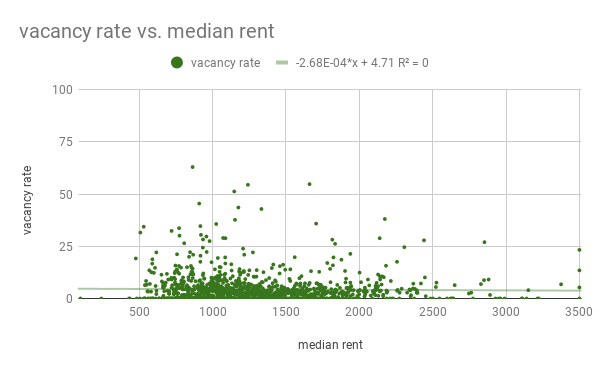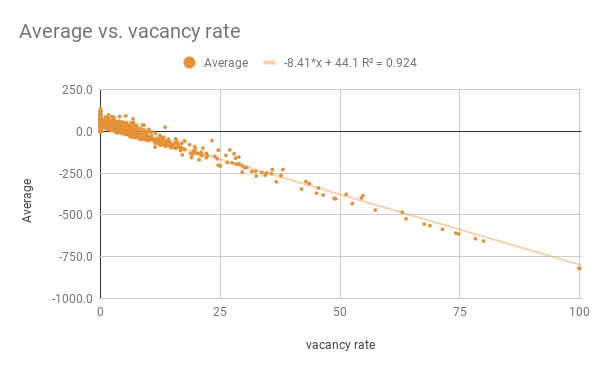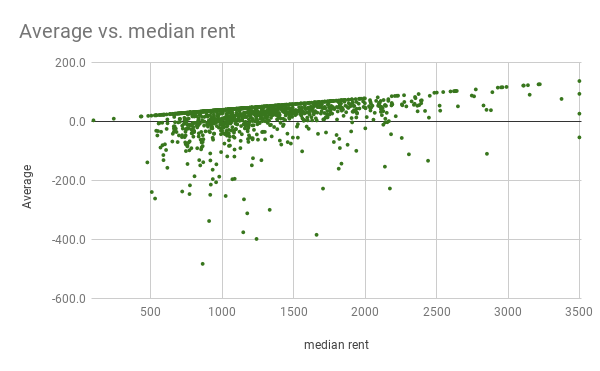*** Non-partisan legislative analysis ***
One of the housing bills being considered this year is SB 330. This is an interesting bill because parts of it attempt to reduce local control over building and permitting in cities that have demonstrated their inability to permit sufficient housing, but how can the state tell that a city has under built housing? The bill looks at rents and vacancy rates, as reported by the American Community Survey, 2017.
The current test follows:
(a) As used in this section:
(1)
(A) Except as otherwise provided in subparagraph (B), “affected city” means a city, including a charter city, for which the department determines, in any calendar year, that the average of both of the following amounts exceeds ___:
(i) The percentage by which the city’s average rate of rent exceeded 130 percent of the national median rent in 2017, based on the federal 2013-2017 American Community Survey 5-year Estimates.
(ii) The percentage by which the vacancy rate for residential rental units is less than the national vacancy rate, based on the federal 2013-2017 American Community Survey 5-year Estimates.
(B) Notwithstanding subparagraph (A), “affected city” does not include any city that has a population of 5,000 or less and is not located within an urban core.
(2) “Affected county” means a county in which at least 50 percent of the cities located within the territorial boundaries of the county are affected cities.
This language aims to target cities with high rents and low vacancy rates compared to the national averages. In analyzing which cities could be affected by SB 330, I am interpreting the overall formula to determine the referenced average as follows:
The language in the bill isn’t perfectly clear however, there are alternative interpretations of what the bill author means. There is some discussion in this twitter tree here.
A volunteer, Dana Beuschel, generously looked up the ACS data for US and California median rents and vacancy rates, available in a spreadsheet, here.
The first interesting thing about this data is that there are several expensive cities that also have high vacancy rates. This means that inevitably, using the current formula, there will be some high rent cities that are excluded from the streamlining, tenant protection and pro-housing provisions of the bill.

Another remarkable feature of the data is how many areas have a vacancy rate of zero: 608 out of 1436 census areas with data for vacancy rates.
The bill’s author has not yet decided what overall average would trigger the programs in the bill. The overall average and the vacancy rate have a much stronger relationship than the overall average and the median rent.


What average score do you think should trigger the streamlining and tenant protection programs in SB 330? Please comment here, or email me at sonja@calhdf.org.
